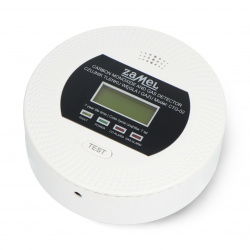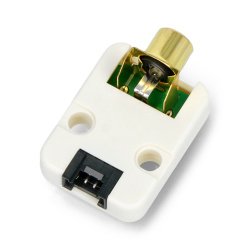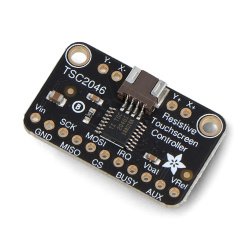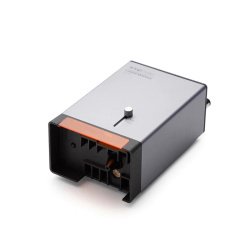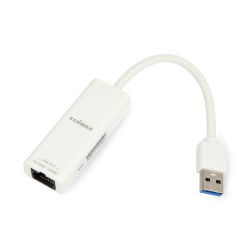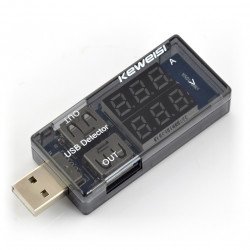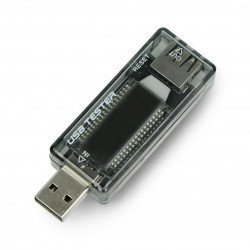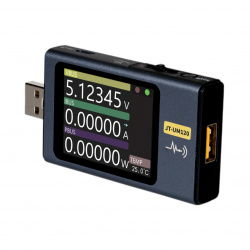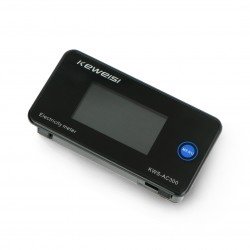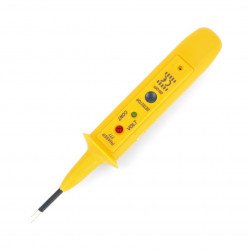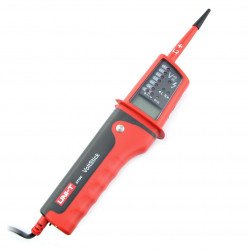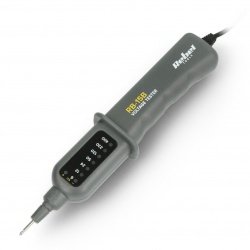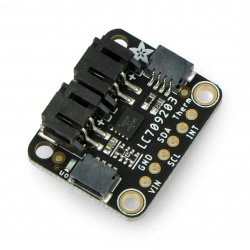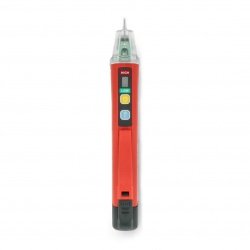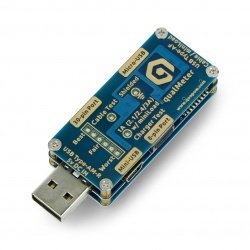Voltage Indicator - in many devices we encounter the need to indicate the level of voltage or current. Regardless of whether we are working on our own construction of the laboratory power supply or a simple charger to charge a car battery, properly selected instrument to measure key parameters provides reliable measurement with the appropriate accuracy for the application. Botland store offer lets you find both simple, analog electrical meters and ready-made devices helpful in everyday work of electronics and electricians.
Voltage indicators
Charger Doctor - current and voltage meter USB
The device measures current and voltage from the USB slot of the computer or power supply / charger. It has a male plug type A and female socket to connect any device -...USB tester Keweisi KWS-1802C current and voltage meter from USB C port - black
A USB meter designed for testing USB type C sockets . It is equipped with a clear LCD screen, which displays voltage, current, capacity, operating time, internal temperature...USB multimeter KWS-V21 Charger Detector
Small size USB meter designed for testing USB 2.0 sockets . Very easy to use. It is equipped with a clear LCD screen, which displays voltage, current, capacity and...Battery charge level and sound level indicator - KA2284
The module is based on the KA2284 system. It is used to measure the input signal with the 5 LEDs, which are gradually included depending on the value of the measured voltage....USB tester Keweisi KWS-1802C current and voltage meter from USB C port - white
USB meter in white, designed for testing USB type C sockets . It is equipped with a small but clear LCD screen , which displays voltage, current, capacity, operating time,...USB sockets tester UNI-T UT658 Dual
The UNI-T UT658 Dual USB socket tester allows you to test USB chargers , portable power supplies, USB type A and C cables and other charging devices. UT658 allows you to...USB-Multimeter - USB port voltage, current and power meter - Joy-IT UM120
UM120 is a modern USB multimeter that allows you to measure voltage, current, power, energy and charging protocols in real time . It supports the most popular USB...Voltmeter KWS-AC300 with split-core current transfer - 50-30V/100A
The KWS-AC300 is a closed-core AC transformer that allows you to measure current parameters. A small LCD display shows data indicating voltage and current, temperature,...- Reduced price
- SPECIAL OFFERS
Voltage Detector Fazer 777 230V
Single-pole indicator for non-contact detection of AC voltage in installations from 220 V to 380 V.Voltage indicator Rebel RB-15B
Indicator allowing for quick determination of the voltage we are currently working with. The measurement is presented using LEDs on the front of the device. Each diode...LC709203F - LiPoly / LiIon Fuel Gauge and Battery Monitor - STEMMA QT / Qwiic - Adafruit 4712
Battery level indicator from Adafruit. It allows to measure the voltage of Li-Pol and Li-Ion batteries. Displays the voltage value and percentage charge of the cell. The...Non-contact voltage tester Uni-T UT12D-EU
A device that allows you to safely detect voltage. These types of indicators are commonly used in work related to repair or maintenance of cables, sockets and other electrical...DFRobot qualMeter Basic - power supply/charger and USB cable tester
qualMeter is a simple DIY device that enables you to diagnose the quality of your USB charging cable and the charger itself. It allows you to check wires type: female microUSB...See also
Voltmeters - the charm of old devices
Analog voltmeter, or indicator voltage meter, is the longest type of voltage indicator on the market. In the past, each voltage indicator, from a simple amp meter in amplifiers and cassette recorders, to the high class laboratory equipment, was equipped with the so-called measuring "circuit". The principle of operation of such an element is very simple: the flow of current through a light, delicate coil connected to the pointer, causes it to rotate in relation to a permanent magnet. The angle of deflection depends on the current intensity, which in turn - with a specified coil resistance - is proportional to the voltage at its terminals. Thus, it can be seen that the same measuring instrument, depending on the additional resistors connected (or not), can serve as both an ammeter and a voltmeter.
Modern applications of analog indicators
Today, despite the widespread availability of digital devices and their low price, pointer voltmeters and ammeters are still readily used. As an example, let's take old-style devices - audio tube amplifiers are the best proof of the continued popularity of traditional indicators. Also simple power supplies, including laboratory power supplies, are often equipped not with a typical LED display, but just an analog voltage indicator. Inexpensive everyday electrical devices, such as car chargers, also often use indicator meters.
Voltage indicators, or can you "see through walls"?
Yes, of course, if we mean the detection of hidden wires or metal parts in walls. For this purpose, voltage detectors are used, which are able to detect, from a short distance, electric cables through which current flows or magnetic field disturbances caused by metal objects (e.g. rebar). For installers and do-it-yourselfers, a "pen" voltage indicator will also be a great help, which will easily identify the phase wire in an electrical installation.
































































































































































































































































































































